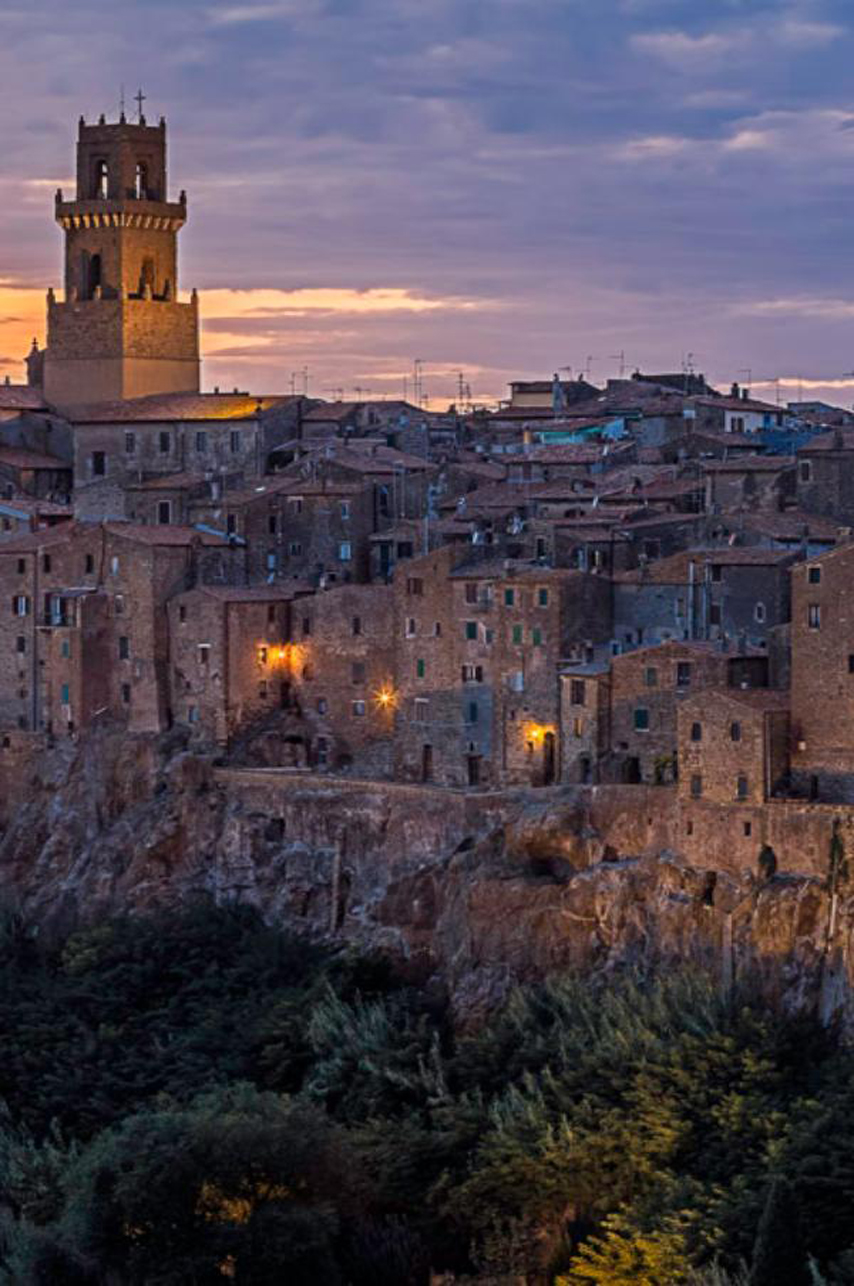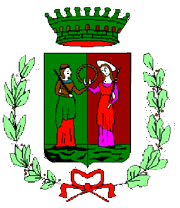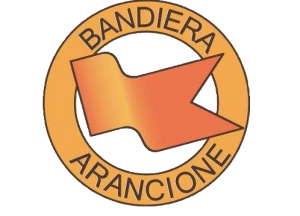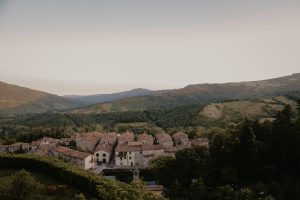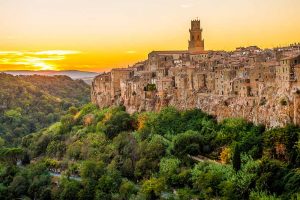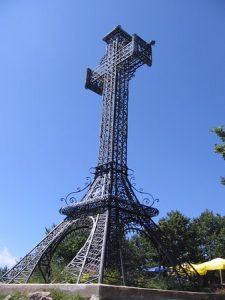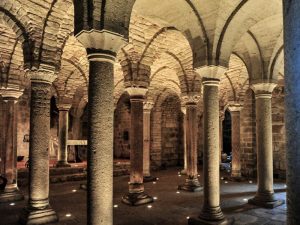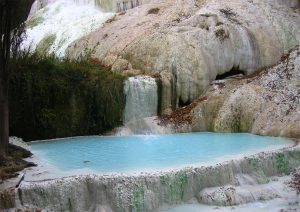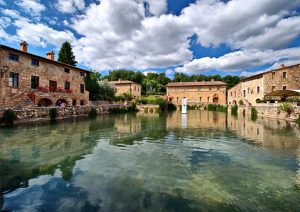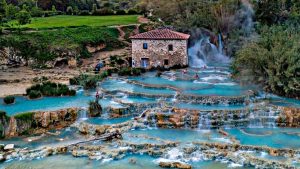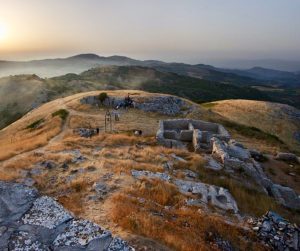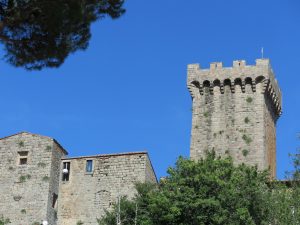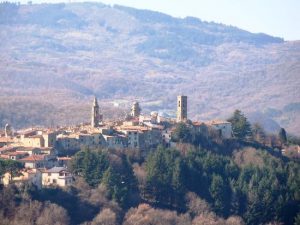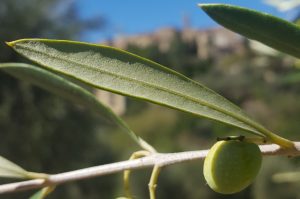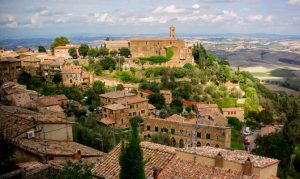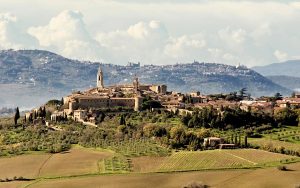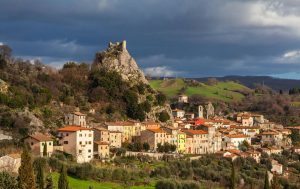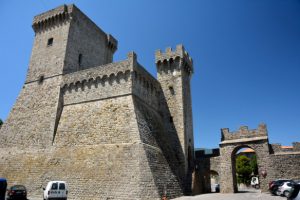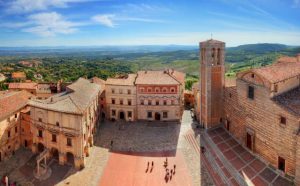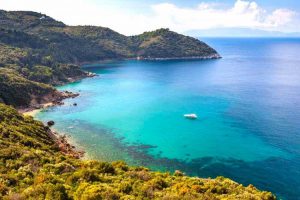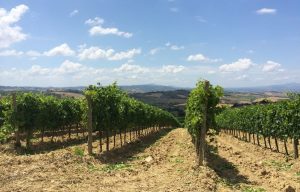Santa Fiora between history and nature
A little corner of paradise in the heart of Mount Amiata and the Tuscan Maremma
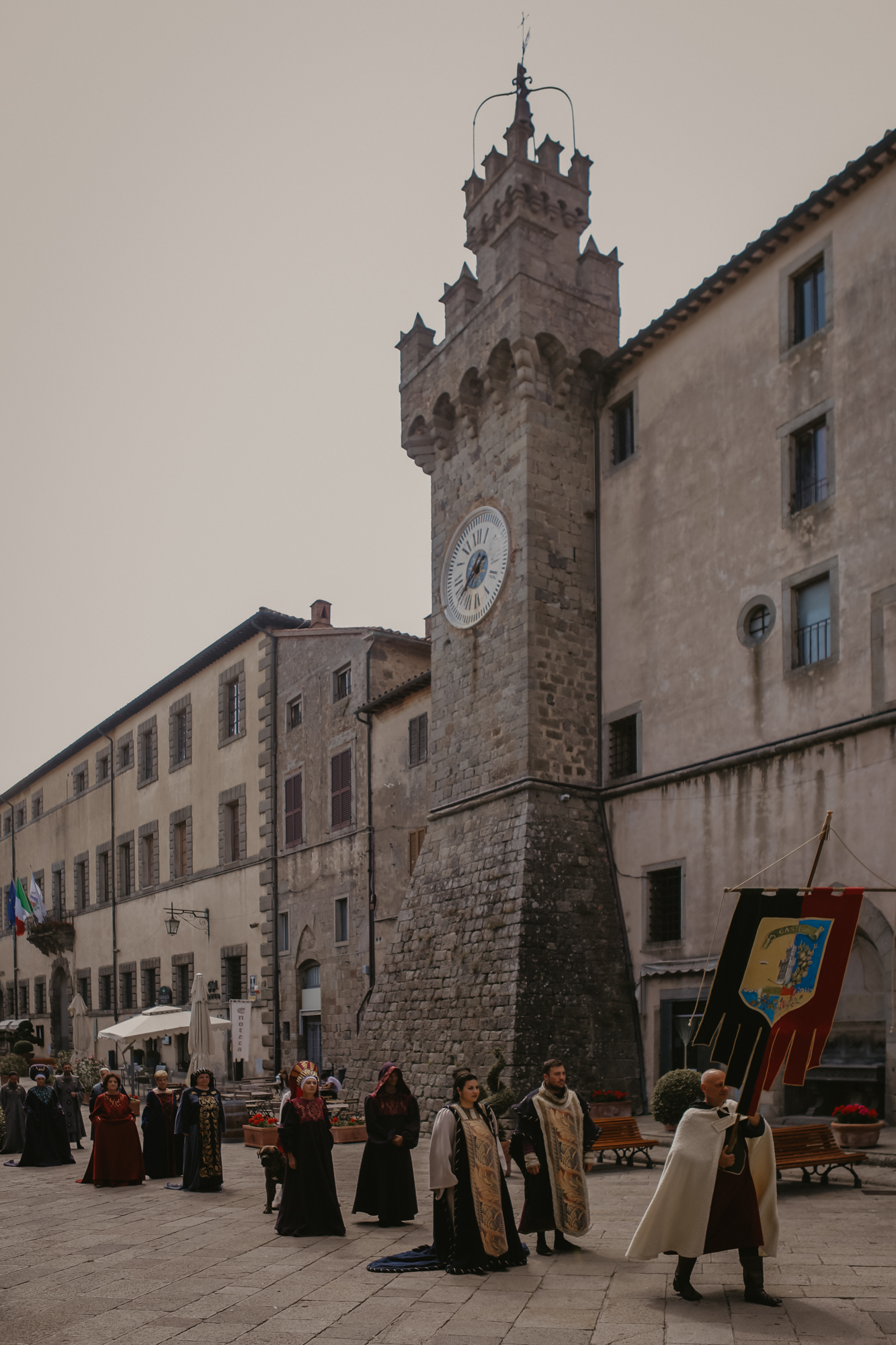
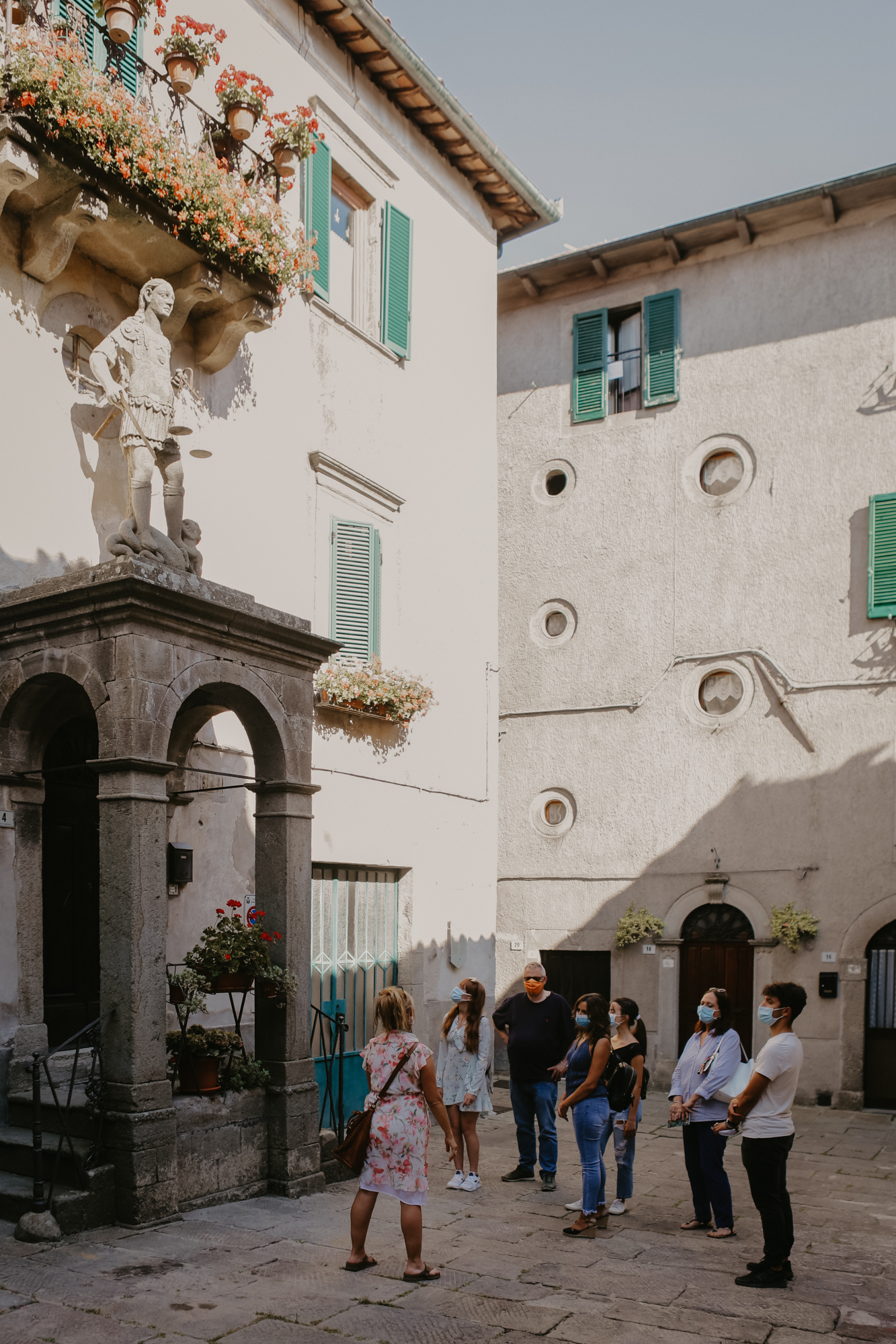
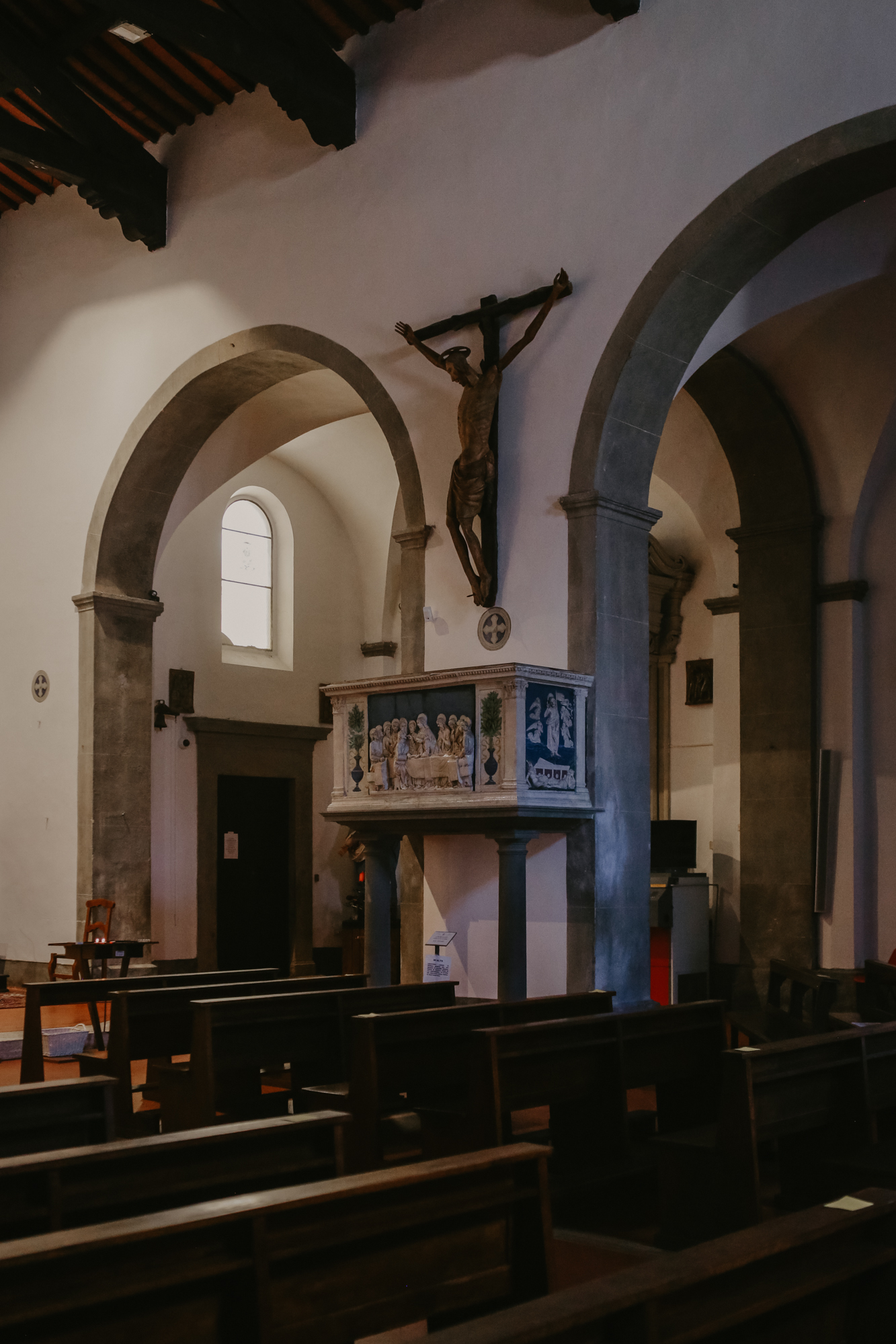
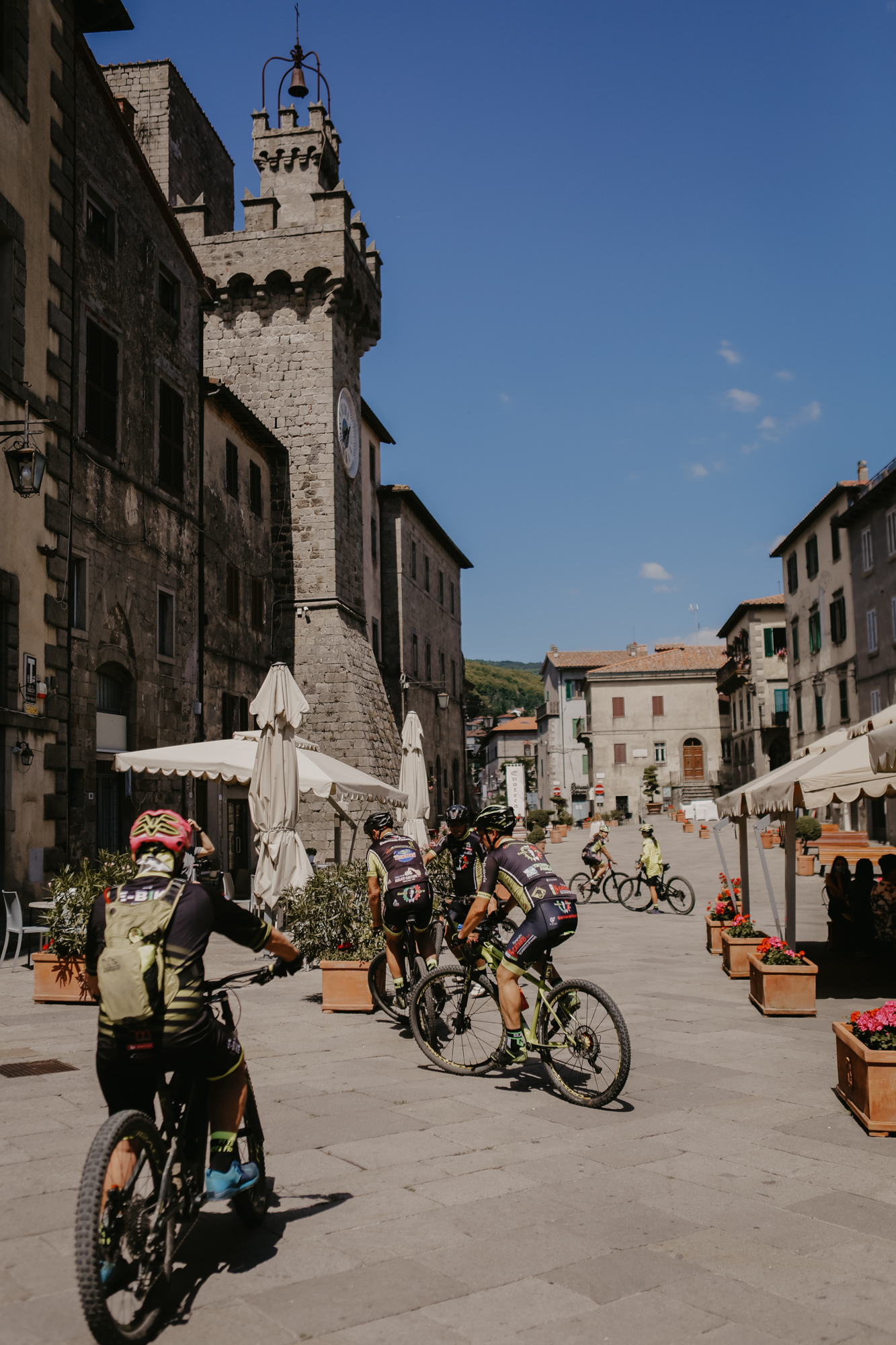
The village of Santa Fiora is located on the southern slope of Mount Amiata, perched on a cliff from which the Fiora river rises. Santa Fiora has its roots in an ancient past, as it was born thanks to the Aldobrandeschi. It was then under the dominion of the Sforza family that the village experienced its most shining moments, and important testimonies preserved in its narrow streets date exactely from this period. The historic center is a place where time has stopped, where the rhythms are still marked by the slow flow of the river that bathes the green Tuscan hills.
Santa Fiora has been included in the list of the most beautiful villages in Italy. Its historic center is a hymn to the Middle Ages: its narrow and winding alleys will lead you to discover some of the beauties of this tiny corner of paradise.
The oldest part of the town is the Terziere (district) of Castello, where it is still possible to admire the remains of the Aldobrandeschi fortifications. From Piazza Garibaldi, the heart of Santa Fiora, the view of the surrounding landscape is a real wonder: here are the Torre dell’Orologio (clock tower), dating back to the seventeenth century, and the Palazzo dei Conti Sforza Cesarini (Counts Sforza Cesarini’s Palace), currently the seat of the Municipality. Inside you can also find the MUSEUM OF MERCURY MINES OF MOUNT AMIATA, where you can retrace the history of the miners, who have long been the soul of this village.
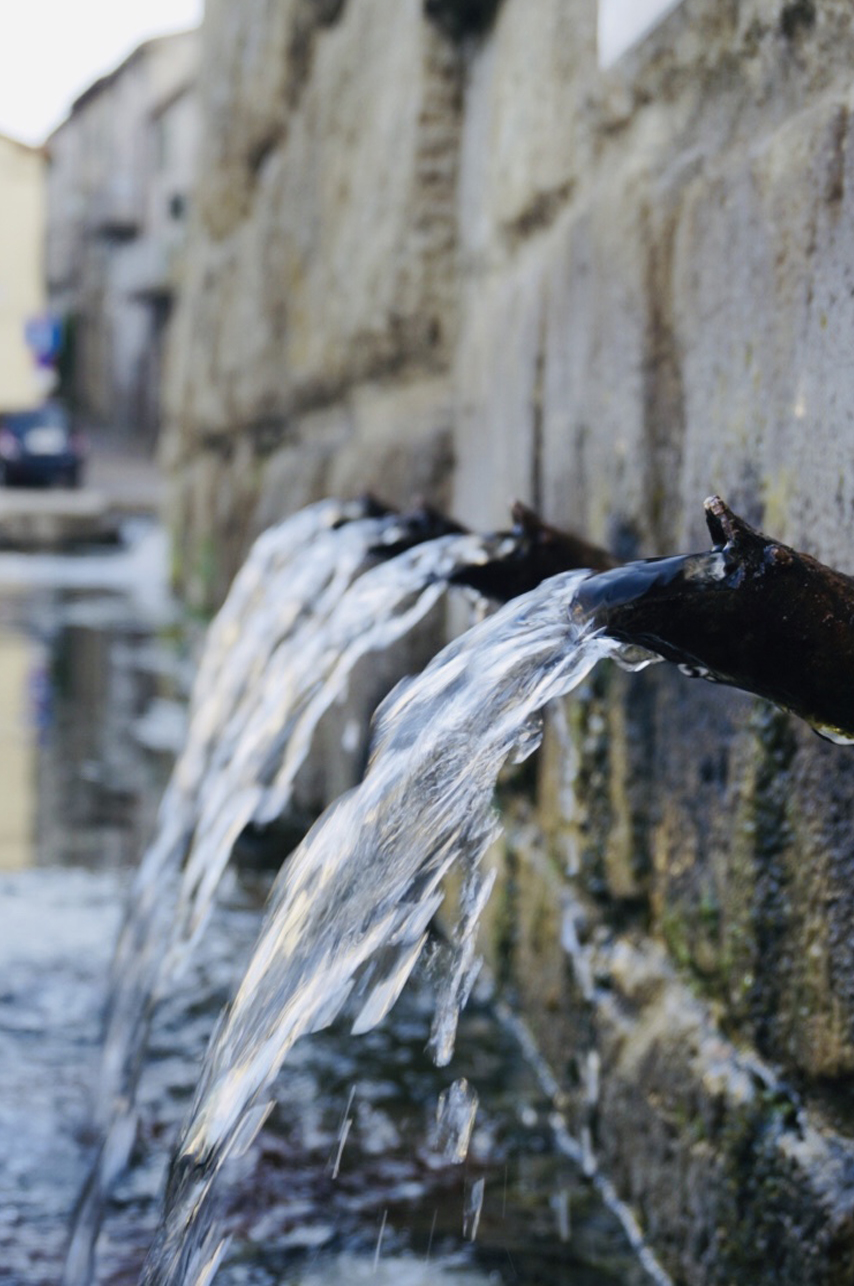
Another beauty that you should not miss is the parish church of Saint Flora and Lucille, the most impressive church in the town. You will be amazed by the collection of terracottas exposed there: these masterpieces by Andrea della Robbia, with their vivid and brilliant colors, are still a source of pride for Santa Fiora today. Beyond what remains of the walls that once surrounded the Castello district, we can still admire many wonders. As an example, the church of Our Lady of the Snows (Madonna delle Nevi), built above the source of the Fiora river, whose slow flow can be observed from the glass floor of the building.
The luxuriant nature of Santa Fiora
The abundance of water, which is one of the main features of the village, has allowed nature to flourish as you can see in no other places in the surroundings. If you want to admire the unspoiled greenery of this small town, you cannot miss the Peschiera: it is a Renaissance park-garden built by the Sforza family, where trout was once raised. Santa Fiora is the perfect setting for those who love active tourism, but also for those who want to find some peace in the silence of nature.
Finally, on the slopes of Mount Calvo, you can find the Provincial Nature Reserve Bosco della SS. Trinità, a large protected area where vegetation grows luxuriantly. Among the white fir and chestnut trees traditional of this area, you can see the Convent of the Most Holy Trinity (Convento della SS. Trinità), built by Count Guido Sforza, who wanted to celebrate his victory against a very dangerous dragon that terrified the people living in the place. The legend is fascinating and full of mysteries, just like the interior of this magnificent church, which still conserves half of the mythological creature’s head.
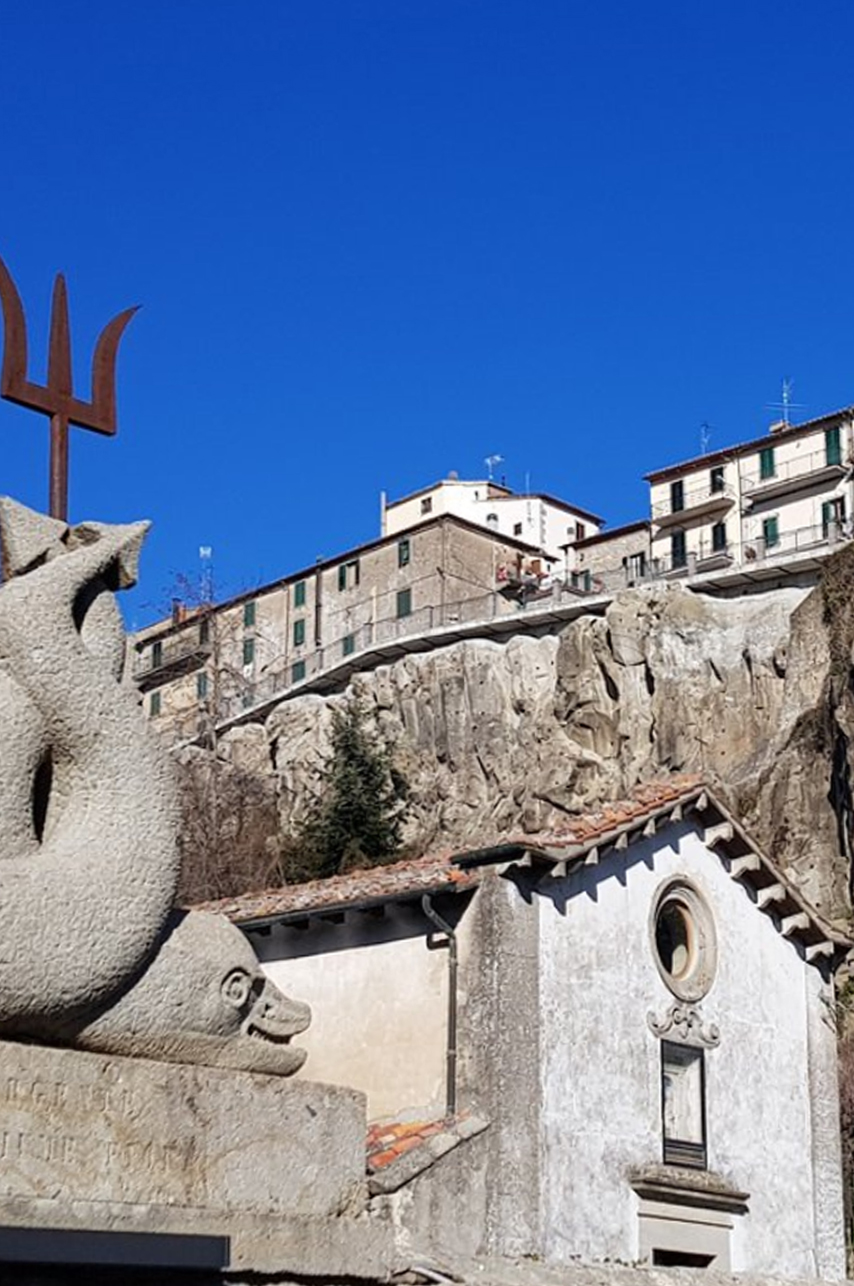
We are waiting for you in Santa Fiora!

What to visit: the surroundings
Santa Fiora
Pitigliano
The Amiata summit
Abbadia San Salvatore
Bagni di San Filippo
Bagno Vignoni
Saturnia
Monte Labbro
Arcidosso
Castel del Piano
Seggiano
Montalcino
Pienza
Roccalbegna
Piancastagnaio
Montepulciano
The Argentario coast
Scansano and the land of Morellino wine
Mount Amiata, an extinct volcano, is rich in vegetation, lakes and areas which are perfect for excursions and walks, on foot, by bicycle, and on horseback. Thanks to its volcanic nature, the area is rich in thermal springs, some of which free, where you can spend a day in total relaxation.
We recommend a tour of the Amiata villages surrounding Santa Fiora:
Abbadia San Salvatore is located on the eastern side of Mount Amiata. The history of the village is closely linked to that of the Abbey of Holy Savior (Abbazia di San Salvatore), one of the most important ones in southern Tuscany. You must visit the abbey museum, the church and the crypt, a very fascinating location characterized by many variously decorated columns.
With its mines, Mount Amiata was one of the main world centers for the production of mercury; now mercury is no longer produced and these mines are closed. In Abbadia San Salvatore it is possible to learn more about these events thanks to its Mining Museum Park (Parco museo minerario) where, among other things, you can visit a gallery complete with mine wagons.
We move a few kilometers south to reach the second and last Amiata municipality in the province of Siena: Piancastagnaio. Here we find the first of the Aldobrandeschi fortresses, which stands with its two towers to defend the village and one of the access points to it. The village contains some prestigious buildings such as Bourbon del Monte Palace and some religious places containing works of art.
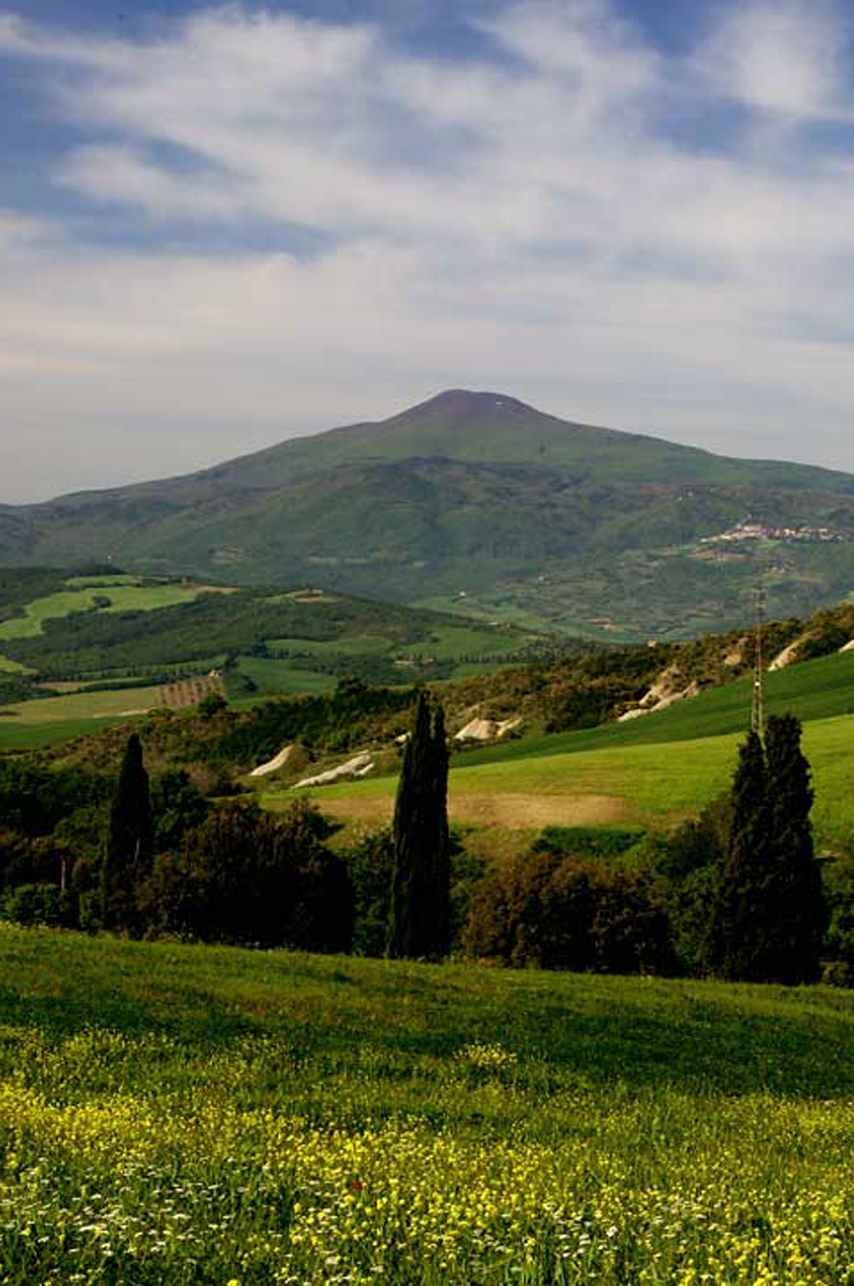
Once again, we are talking about an Aldobrandeschi fortress, this time it is the one that rises at the top of Arcidosso. It is a very ancient fortress, built starting from the ninth century and enlarged several times during the Middle Ages. Among the various things to see in Arcidosso, we point out the unexpected Museum of Far Eastern Art and Culture (Museo di Arte e Cultura Orientale), entirely dedicated to Tibet and Central Asia.
Now all that remains is reach the summit of Mount Amiata. The top of this ancient volcano is easily accessible as it can also be approached very close by car and there are also hotels and restaurants nearby. From the top, marked by a monumental cross 22 meters high, you can enjoy a vast 360 degrees panorama, favored by the absence of other large hills nearby.
Another interesting village to visit near Mount Amiata is undoubtedly Roccalbegna. . Located on the slopes of Mount Labbro, Roccalbegna is characterized by a particular position enclosed between two high cliffs dominated by two fortresses: the Aldobrandeschi Fortress (Rocca Aldobrandesca) and the Cassero Senese. Also excellent viewpoints, these two castles make us understand the strategic importance of this place. Inside the village, the church of Saints Peter and Paulis worth a visit, as well as the nearby Triana Castle.
Mount Labbro (or Labro) is located on the south-west side of Mount Amiata and its nature reserve extends for over 650 hectares (1600 acres) in the municipality of Arcidosso, between the Zancona stream and its left tributary ditch Onazio, to the north, and the river Albegna to the south. The whole territory is in medium mountain, with elevations such as the homonymous mountain, which reaches 1190 meters.
The Reserve is characterized by a scarce presence of arboreal vegetation, limited to the ditch Onazio area, with Turkey oaks, chestnut trees, elms, hazelnuts and maples.
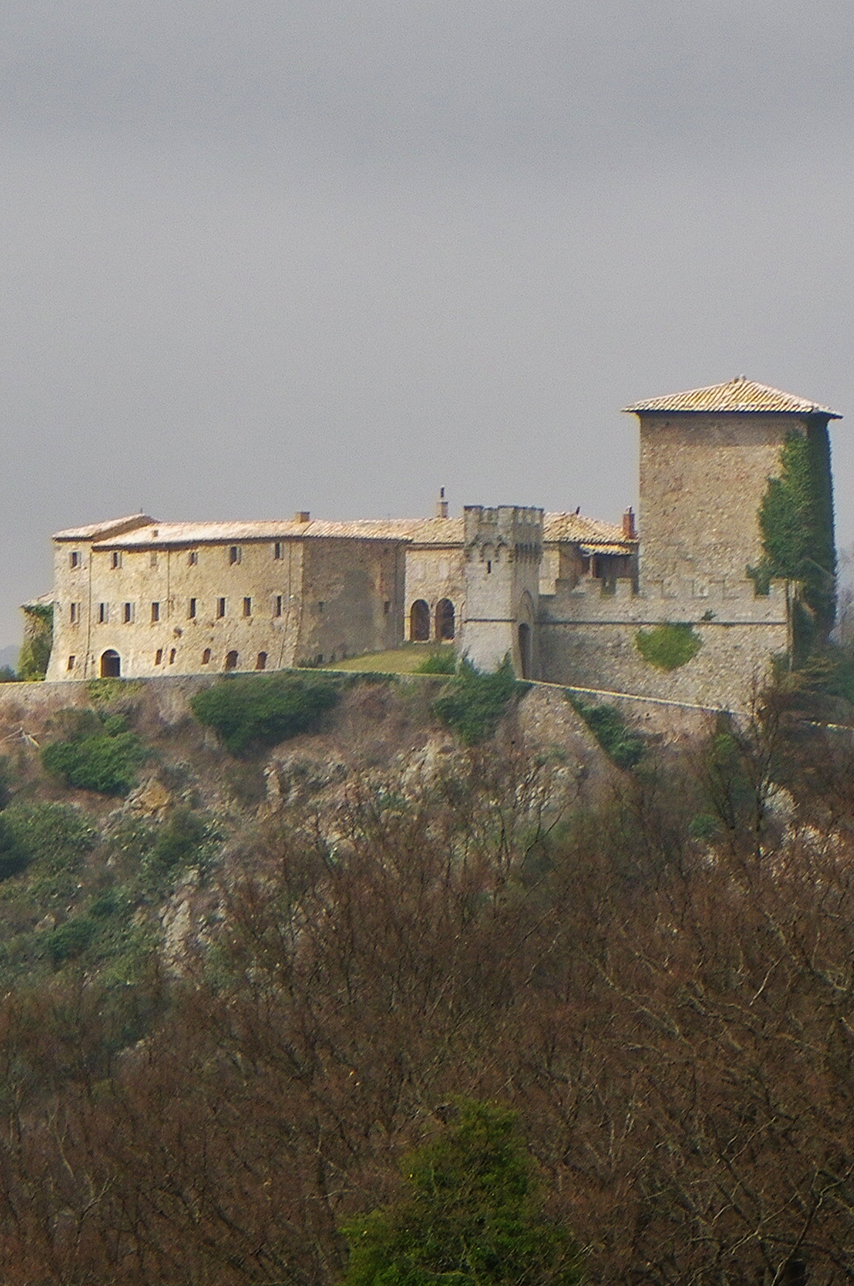
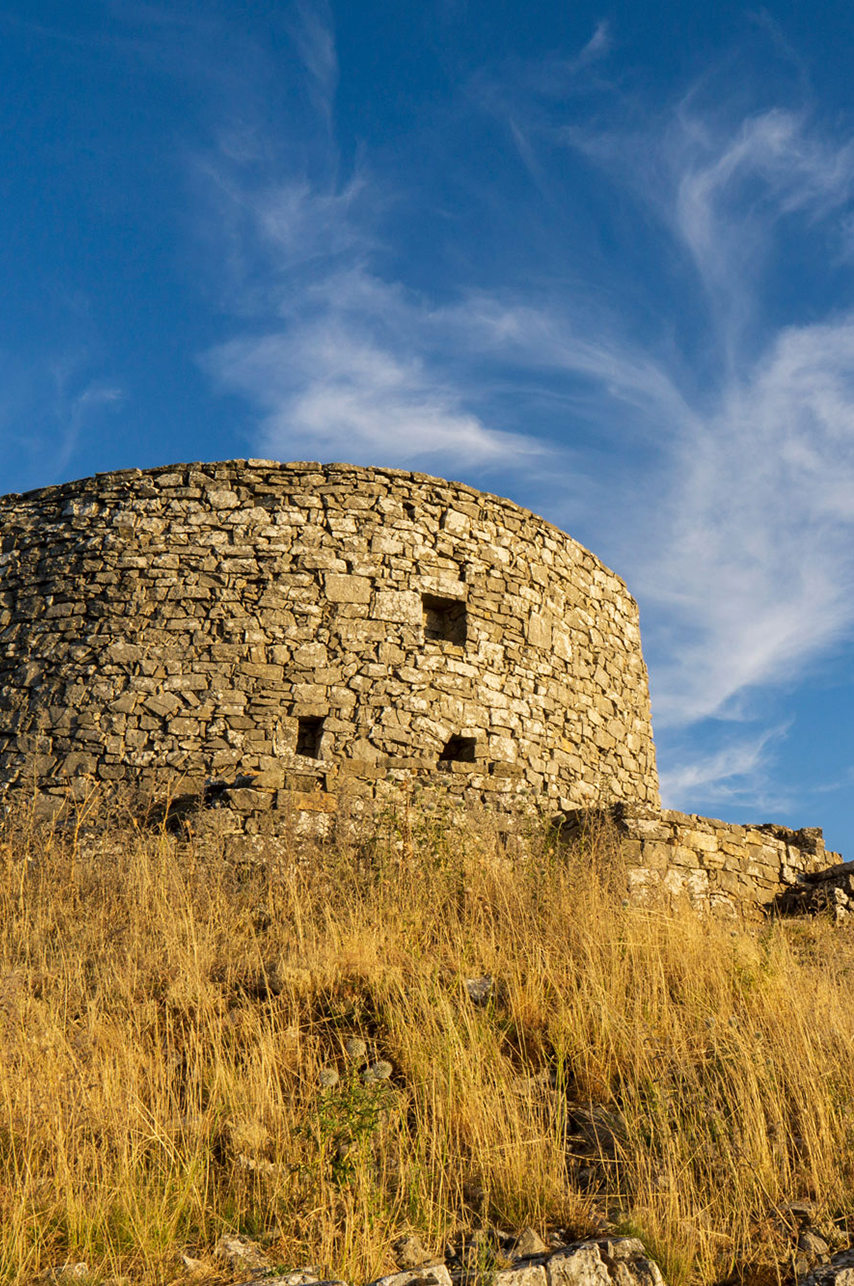
Chestnut groves are found mainly on the northern side of Mount Labbro, where they occupy an area of about 60 hectares (150 acres).
Fauna is represented by countless species, including mammals such as wild cat, skunk, marten, stone marten, and badger. Here it is also possible to admire the short-toed eagle, the buzzard, the honey buzzard, the harrier and the lanner falcons. In addition, we can find the blue rock thrush, common rock thrush, the northern wheatear and the alpine accentor.
On the summit of Monte Labbro, it is worth noting the presence of some buildings of historical and cultural importance, dating back to the Davide Lazzaretti’s Jurisdavidic Movement.
Inside the Reserve there is also the Parco Faunistico dell’Amiata (Amiata Fauna Park), which occupies 120 hectares (about 300 acres). It is a “Wild Park” on the German model: here the animals live free. Among the guests we can find the deer, the fallow deer, mouflons and specimens of chamois and roe deer. From the observation enclosures, the luckiest visitor can also spot the Apennine wolf.
Continuing towards the Val d’Orcia you will meet the villages of Castel del Piano first and Seggiano later. Both medieval villages are worth a stop. The area is known, among other things, for the cultivation of olives and in particular a local variety the olivastra seggianese, and for the Montecucco DOCG wine.
Within the municipality of Seggiano we can find Daniel Spoerri’s garden, a park dedicated to contemporary art.
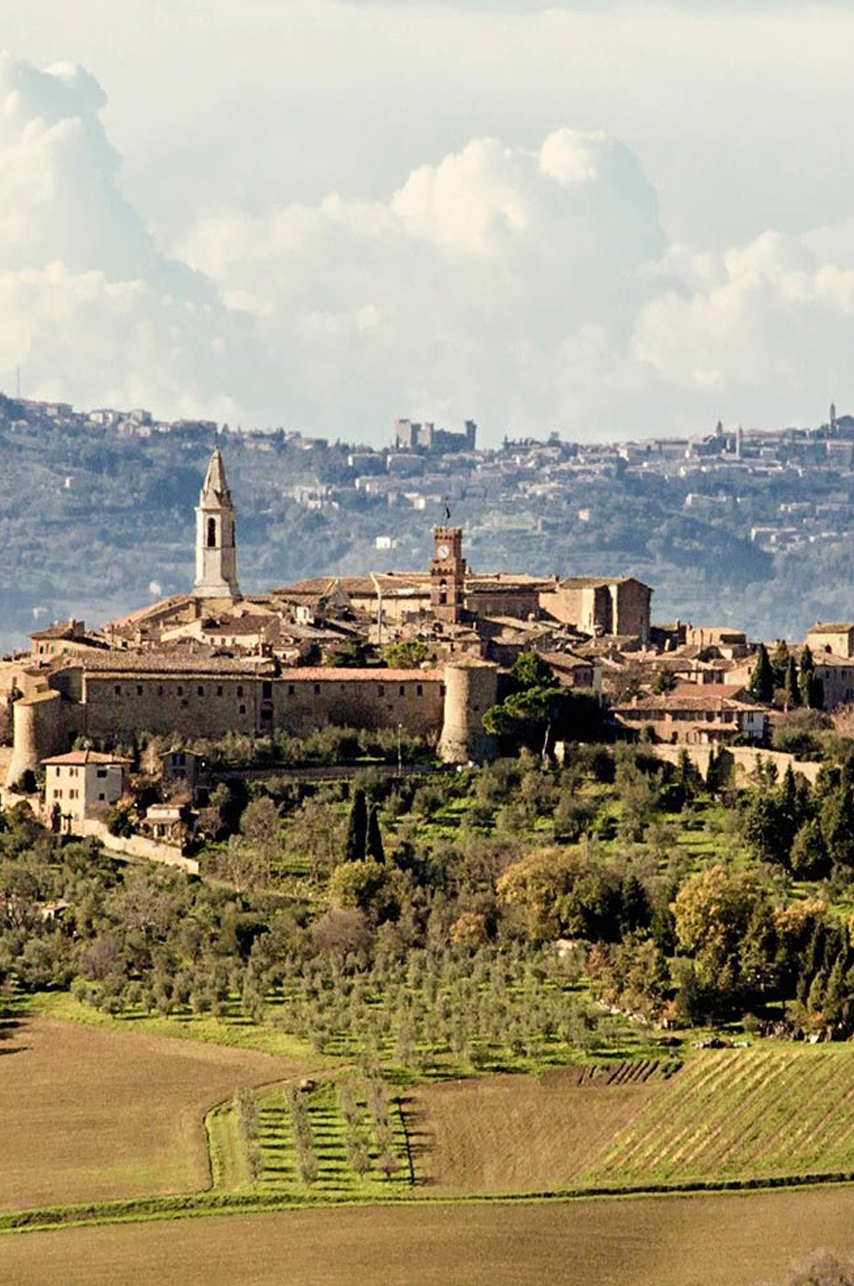
You must not miss the Val d’Orcia Park, a landscape declared a World Heritage Site by UNESCO.
The river that gave the valley its name is little more than a stream: for most of the year it almost dries up, due to the summer heat, but with the autumn rains it returns strong and impetuous. On the top of the hills, extraordinarily charming villages and monuments guard oak woods, olive groves and the vineyards where Brunello and the other great wines of this part of Tuscany are produced.
Following the wave movement of the hills, you can have a journey starting from the height of the fortress of Radicofani, from where you can look out at the whole valley; you can then reach the romantic Pienza, the Ideal City, the set of Zeffirelli’s “Romeo and Juliet”; recognize the crown of San Quirico, pass through Castiglione and then continue on to Montalcino, sip a good Brunello. Afterwards, to give every sense its own pleasure, you cannot neclect a visit to San Giovanni d’Asso and its Truffle Museum.
If, after wandering so much, you want to allow yourself an evocative pause, you can stop in Bagno Vignoni, famous for its large thermal pool, and in Bagni San Filippo, where the water rises from the heart of the volcano, returns to light with arrogance and forms concretions of rare beauty, offering well-being and health for the last few millennia.
Just 30 minutes from Santa Fiora, within a few kilometers there are three tuff jewels. The most striking one, even while approaching the village, which is located on a rocky spur surrounded by valleys and rivers, is Pitigliano. Also called the Little Jerusalemdue to the Jewish community that has lived here since the 15th century, you will find Etruscan, medieval and Renaissance traces. Discover the Jewish ghetto, the caves and the tower-houses and do not leave without having tasted a glass of Bianco di Pitigliano Doc. Sorano is instead called the Matera of Tuscany: it also stands on a spur of rock and is surrounded by walls (in the Middle Ages it was the defensive village of the Aldobrandeschi family). The last stop is the Etruscan Sovana, but first you have to stop at the Città del Tufo (Tuff City) Archaeological Park, which preserves the historical, archaeological and cultural treasures of this territory, from the Church of St Sebastian to the Aldobrandeschi fortress, from the necropolis to Etruscan tombs, from the Vie Cave (Hollow Paths) to the rocky settlements.
If you are a wine lover and you love the countryside, one of the most beautiful experiences you can do in Tuscany is getting lost along the best wine routes, discover the territories of Montecucco DOCG, the Morellino di Scansano DOCG, the Brunello di Montalcino DOCG, the Nobile di Montepulciano DOCG and the Orcia DOC.
And there are still many territories you can discover: Maremma, the Argentario coast, the Crete Senesi… come visit us!
